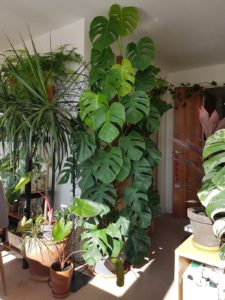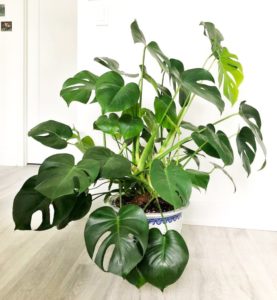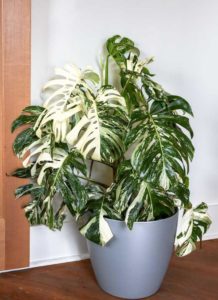Plant Spotlight: MONSTERA
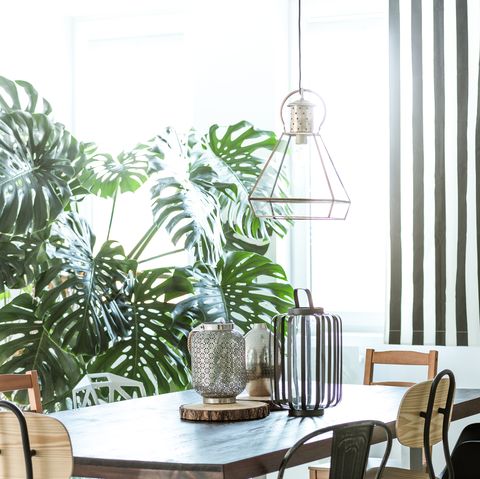
Did you know that our show room is chalk full of green goodness?! No, not that kind of green goodness. But we DO have a crap ton of house plants! The #plantdaddy, #plantmommy trend has been growing exponentially year after year, and we florists couldn’t be happier. After all, the BLOOMdiggity owner herself is a bona fide #crazyplantlady!
So really, it only makes sense then that we do our best to offer a selection of plants in addition to our fresh florals.
This week, we are spotlighting the ever illusive & trendy Monstera Deliciosa!
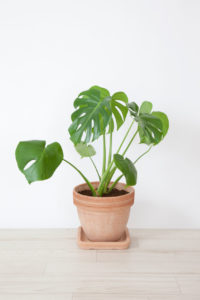 Monstera’s are one of Instagram and Pinterests favourite plants right now. We are seeing them EVERYWHERE, and for good reason. These beauties are absolute showstoppers, and have no problem being the queen diva of any living room. Here are some care instructions to keep your Monstera Babies happy:
Monstera’s are one of Instagram and Pinterests favourite plants right now. We are seeing them EVERYWHERE, and for good reason. These beauties are absolute showstoppers, and have no problem being the queen diva of any living room. Here are some care instructions to keep your Monstera Babies happy:
Light Requirements: Bright, indirect light.
Too much sun can cause a Monstera’s leaves to yellow. Alternatively, placing your Monstera in too dark of a space will cause negative phototropism (leaves grow towards the dark). You want a spot where your Monstera receives bright, indirect sun for it to thrive.
Water Requirements: Moderate.
Monstera’s don’t need their feet consistently wet. Rather, you should water moderately & evenly, allowing soil to become dry in between. Not specific enough? Check the soil 2″ below top soil level. If it’s dry there, it’s time to water! Monstera’s require much less water in Winter months.
Fertilizer:
Feed with a balanced liquid 20-20-20 (Nitrogen, Phosphorus, Potassium) fertilizer bi-weekly in the spring-summer months, and monthly-bi-monthly in the winter months. Although Monstera’s rarely bloom indoors, you can attempt to encourage blooms with a 15-30-15 liquid fertilizer.
Signs of Under/Over Fertilizing:
A Mature Monstera that is producing leaves without splits or fenestrations is either deficient in light, or fertilizer.
Yellowing leaves with no signs of rot or or wilt are also signs of nutrition deficiency.
The formation of a white crust on top of your soil is an indication of OVER-fertilizing, as are brown leaf tips.
When fertilizing, it is best to water until you see water drain out the bottom of the pot, traveling all the way through the soil and out to prevent damaging fertilizer build up.
Humidity: YES, PLEASE!
Monstera’s are native to very humid climates, and would greatly appreciate that you cater to that, please and thank you very much! As you will most likely be investing some cash into your Monstera plant, do yourself a favor and also invest in a humidifer. If you can’t do that right away, then mist your Monstera plant twice per week to ensure it isn’t getting to dry. It is also best to mist in the morning so excess water can dry throughout the day.
Hygiene: Yes, Monstera’s need to be bathed.
Clean yo leaves! To do so, place 2-3 drops of dish soap into a bowl of water. Dip a clean cloth into the water and wring out any excess, and then use that to wipe down the leaves. A monthly cleaning will reduce dust buildup on the leaves and keep pest issues at bay.
Fun Facts about Monstera Plants:
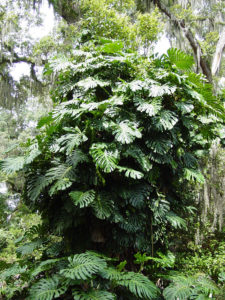
- Monstera’s originate in Southern Mexico and down into South America
- Aerial Plant: Although it does have roots like any other plant, it also has roots along it’s stems (outside of the soil). These roots grab onto tree bark, allowing it to climb upwards, making monstera a CLIMBING PLANT. So it is recommended to invest in a trellis, or moss pole to allow your Monstera to grow upwards as it does in it’s natural habitat.
- Can grow dozens of feet tall in its native land, with leaves up to two feet wide
- It grows fruit (in its natural habitat, that is)! This fruit is said to taste like a cross between pineapple, banana, and mango. However, fruit can ONLY be eaten when ripe. Monstera leaves, roots, sap, and unripened fruit are poisonous. In other words, the ‘delicious monster’ is only delicious when its ready to be!
- Considered an invasive species in Hawaii
- Variegated Monstera Plants are incredibly rare, and can go for $500-1500+ depending on the seller, and the size of the overall plant and/or cutting.
